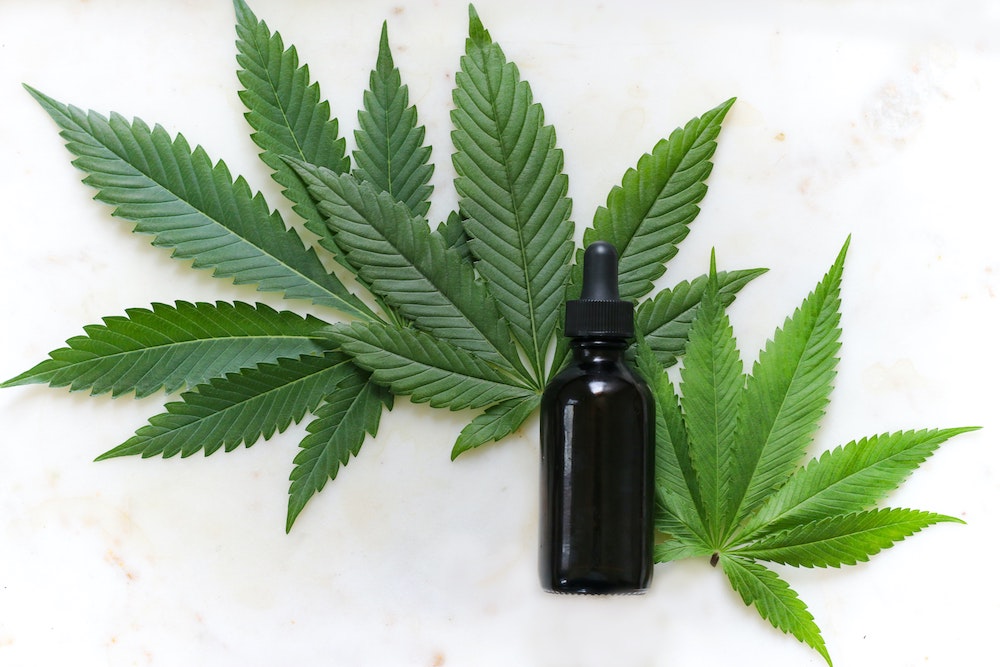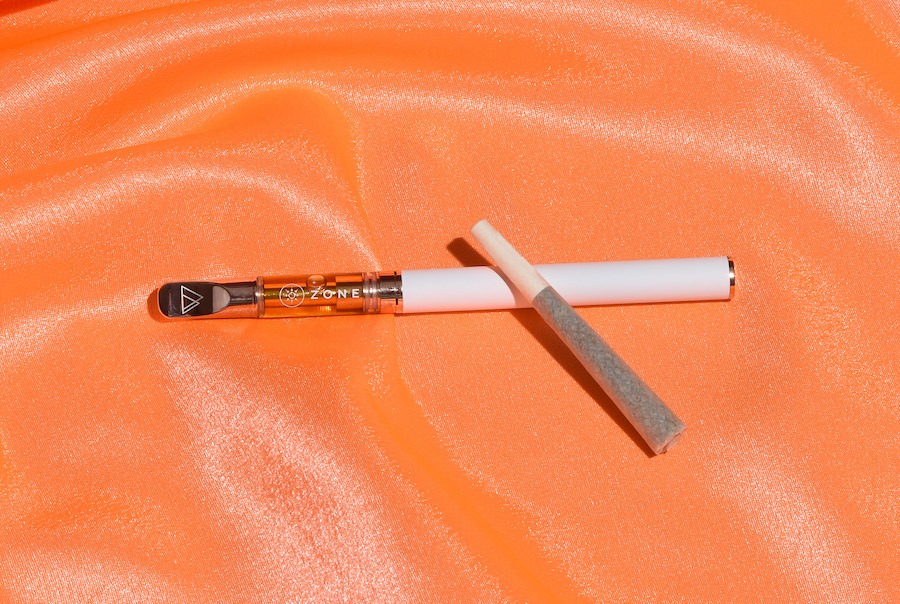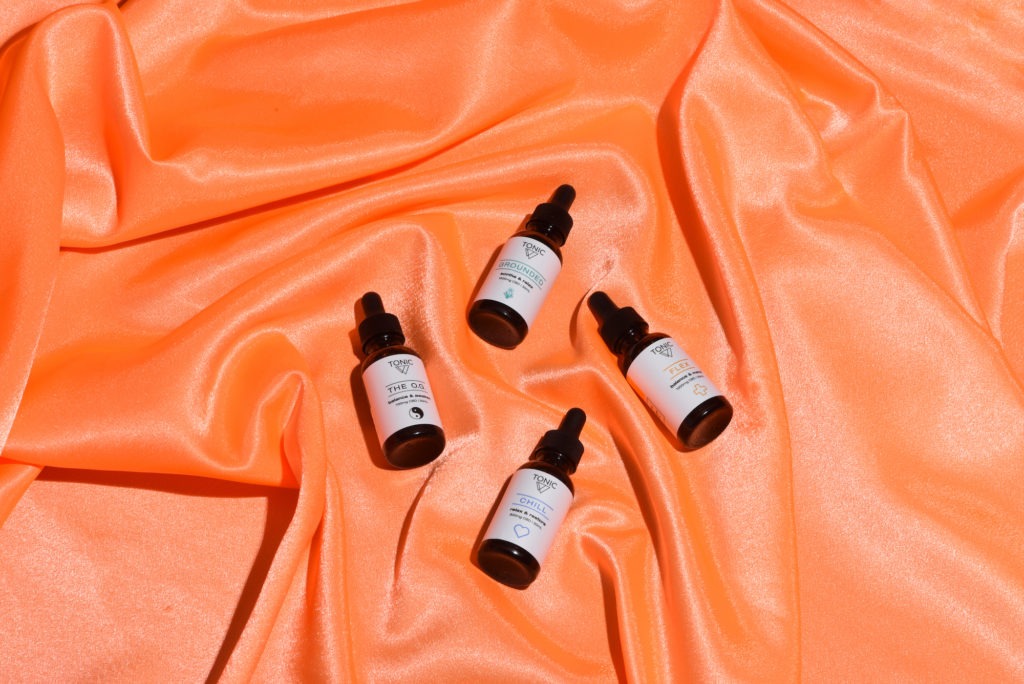How Does CBD Help With Pain?
The science behind CBD for pain relief
by Zoe Sigman
Over 20% of adults in the US are living with chronic pain 1. Managing that pain costs well over $560 billion dollars in healthcare, missed work, and lowered wages 2. The development of opiate medications in the ’90s was supposed to solve an epidemic of pain, instead it created an epidemic of addiction. Opiates are one of the only types of drugs used to treat pain, and researchers are desperate to find alternatives to avoid opiates’ deadly consequences.

As many a stoner can attest, cannabis can be an excellent way to forget your pain for a few hours. Research has shown that THC is an excellent anti-inflammatory and, for some, works well in managing treatment-resistant pain. THC and CBD seem to work even better to manage pain when they play together. A 1:1 (THC:CBD) pharmaceutical, Nabiximols, is approved for managing pain for patients in Canada, Britain, and Poland.
But what about CBD alone?
CBD for Pain and Inflammation
According to a ton of promising research, CBD could be beneficial for treating and preventing inflammation in inflammatory diseases like arthritis 3 and Crohn’s disease 4. Anti-inflammatories are the main way most of us deal with inflammation – think ibuprofen. Novel anti-inflammatories are highly prized as an alternative to common OTC medications that can have damaging side effects.
Cannabinoids are still at the cutting edge of scientific research and there are huge legal and administrative barriers to working with them. Most of the research on CBD’s impact on inflammation and pain is still preclinical, meaning that there hasn’t been extensive human trials examining CBD’s impact on pain. Though this hasn’t stopped researchers from trying.

CBD has been shown to help reduce the amount of opiates taken by pain patients, suggesting that it could be useful for managing pain in people 5. Anything that can reduce reliance on opiates is worth studying more. Even though there hasn’t been a clinical trial for CBD as a standalone pain reliever, there are many case studies and anecdotes of CBD being used to treat pain in a number of conditions. In a survey conducted by Project CBD, for example, 2200 people reported using CBD to manage their pain 6. Their average self-reported pain score dropped nearly 60% when they used CBD.
A Look at the Science Behind CBD for Pain Relief
CBD works its magic by interacting with a slew of targets throughout the body. The targets CBD interacts with that are thought to be the most involved with regulating inflammation and pain are7:
- TRPV-1: the receptor that allows you to feel the burning sensation of capsaicin, and the associated pain relief capsaicin can bring
- 5-HT1A: a serotonin receptor that has been a target for drugs treating anxiety and depression
- A2A: an adenosine receptor involved in suppressing immune cells, which can protect body tissues from inflammation
And that’s just the tip of the iceberg. There is still a lot to learn about how CBD interacts with our bodies.
Administration Methods
In order for CBD to reach all of those useful targets, you need to get it into your body somehow. And, boy howdy, are there a lot of options to choose from. Each method has its own benefits and drawbacks.
A key measure in determining which method to use is bioavailability, or how much of a drug is absorbed into your body after you take it. Bioavailability could mean the difference between getting relief or not. Although bioavailability of CBD hasn’t been calculated for all administration methods, we’ve done our best to share what is known below.
Inhaling CBD

One of the fastest and most effective ways to get CBD into your body is by inhaling. That can mean lighting up a high-CBD joint, or popping a CBD cartridge on your vape pen. It’s also one of the most bioavailable at an average of 31% 8. The exact bioavailability can range from 2-56% depending on how you inhale 9. Effects can be felt almost immediately, so dosing is as simple as waiting a few minutes and taking another puff.
Ingesting CBD: From Edibles to Beverages to Capsules
For folks hesitant to inhale, there is a wide range of edible CBD products to choose from. This includes foods, beverages, and tinctures. These attractive morsels come with a downside: very low bioavailability and longer activation times. It can take 2-4 hours (or more!) to feel the effects. Bioavailability of orally ingested CBD isn’t universally agreed upon, but hovers somewhere around 6%10. Which means much larger doses are needed to achieve relief. On a plus note, taking CBD with something fatty can quadruple bioavailability11. So bust out that pint of Ben and Jerry’s and make your CBD work for you.
Ingesting CBD Sublingually
Another way to improve the bioavailability of tinctures is to take them sublingually. You can do this by holding them under your tongue for 30-60 seconds before swallowing. There is a very limited amount of data about the bioavailability of sublingually administered CBD. In the studies that do exist, it appears that there is up to a 34% increase in the amount of CBD that makes its way into our blood plasma over oral administration – which would work out to ~8% bioavailability12.

It’s thought that sublingual CBD acts a little more quickly than edibles, and average onset time is around just over one-and-a-half hours13. That same increase in bioavailability when taking CBD with fat holds true with sublingual drops. It’s one of the reasons tinctures are so often made with oil.
CBD Topicals For Pain Relief
CBD can be effective without ever making it into your bloodstream. Topically applied CBD has been shown to help with inflammation, pain, and wound healing in a case study of three patients with a rare disease that causes severe skin blistering14. CBD’s activation of the TRVP1 receptor could mean that it shares the pain-killing properties of topically-applied capsaicin, which works by stimulating the same receptor. Unfortunately, dosage for topical applications has not been studied and there’s very little consistency to the products used.
learn more about the TONIC Relief Pack here
Other CBD Delivery Methods?
There are tons of other administration methods – some of which have been studied more than others. A nasal spray showed 34-46% bioavailability in a rodent model, though we haven’t seen any humans try to snort CBD yet15. Suppositories have been gaining popularity for people dealing with menstrual cramps and general pain, but no studies have been done in humans to date. Whatever method you decide to try, make sure to talk to your doctor about it first.
More Cannabinoids to Come
CBD and THC are far from the only cannabinoids being investigated for their pain-killing properties. Many of the 130+ cannabinoids identified in cannabis have potent anti-inflammatory properties that could mean new pathways to pain management. Some of the most promising are cannabigerol (CBG), cannabigerivarin (CBGV), and tetrahydrocannabivarin (THCV)16.
CBG is the cannabinoid from which all others develop, and is increasingly the focus of studies for a wide range of medical maladies. It could be a more potent pain-killer than THC, and has been shown to be effective at treating nausea in cancer patients. In the past couple of years breeders have successfully created plants dominant in this cannabinoid, and CBG products are rapidly entering the marketplace as a result.
We have a long way to go before scientists know for sure which cannabinoids work best for managing or treating pain. In the meantime, see what works for you and let us know what works!
In the meantime, test out TONIC’s products for yourself to see how effective they are. Click here to view the shop!
Shop our best-selling pain relief blends!
Chronic: 300mg CBD + essential oil roll-on
Flex: 1000mg CBD + black seed oil
Combine the 2 and save with our Relief Pack bundle! 🔥💪
More about Zoe Sigman:

Zoe Sigman is a freelance cannabis science writer, editor, and educator. She is currently Broccoli Magazine’s Science Editor, and previously served as the Program Director for Project CBD. She has testified about CBD and cannabis regulation to the FDA, and regularly speaks about cannabis and cannabis science to patients, medical professionals, and consumers.


 The Steady Supply
The Steady Supply

 Personalized Vibes
Personalized Vibes

